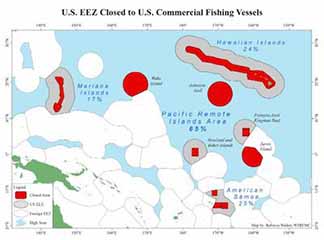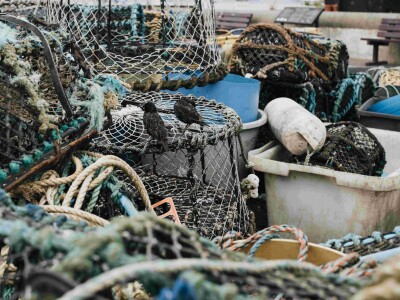You knew it was just a matter of time before President Obama would forge ahead with his plan to expand the Pacific Remote Islands Marine National Monument, and he did so today. But thanks to the efforts of industry and management leaders to persuade the administration that the expansion as originally proposed would devastate U.S. Pacific Islands fisheries, the size of the expansion has been scaled back.
When the plan was announced on June 17, it would have expanded the marine monument from 77,000 square miles to 700,000. Almost immediately, the region's industry and management leaders spoke out against the proposal, stating that it lacked merit on a number of fronts.
The expansion would provide few ecological benefits and weaken efforts to curb illegal foreign fishing practices, they said. And the plan threatened to give foreign fisheries a big competitive advantage over U.S. harvesters in the region, who would be shut out of important and productive fishing grounds.
The region's fishing leaders believed so strongly in their message that they traveled to the White House to deliver it to administration staff. Given that the Western Pacific leaders hadn't been first consulted about the merits of expanding the marine monument and how best to do it, it didn't seem likely the message would be heard.
Maybe the administration did get the message. The plan that will go into effect has been amended to "better accommodate economically vital fishing industries for Hawaii and the U.S. Pacific Islands," the Western Pacific Regional fishery Management Council announced in a news release today.
The revised plan will expand the monument to include the 200-mile Exclusive Economic Zones surrounding Johnston Atoll, Jarvis Island and Wake Island. However, it will not expand the existing 50-mile prohibitions on fishing around Howland and Baker Islands and Palmyra Atoll and Kingman Reef.
The revisions, council leaders say, will let U.S. fishermen continue working within tradition fishing grounds under existing regulations in 35 percent of the U.S. EEZ around the U.S. Pacific Remote Islands, and removes them completely in 65 percent of the EEZ.
"We appreciate the White House's compromise on a monument expansion that could have devastated the region's fisheries and communities without notable environmental benefits," says Kitty Simonds, the Western Pacific Council's executive director, in the news release. "We now look to see how this declaration will be achieved in practice, beyond paper and politics, and hope that the U.S. Coast Guard will use additional enforcement funds to patrol U.S. waters as a first priority."
Well, big ups, as the kids say, to the council for fighting on fishermen's behalf. And I tip my hat to the council and the region's fishing leaders for making the lengthy trip to Washington to voice their serious concerns with the original expansion plan. The revised plan may not be ideal to U.S. fishermen who fish there, but it's certainly an improvement on the original plan, and it wouldn't have happened if the region's leaders hadn't been so vocal and insistent that it needed to change.







